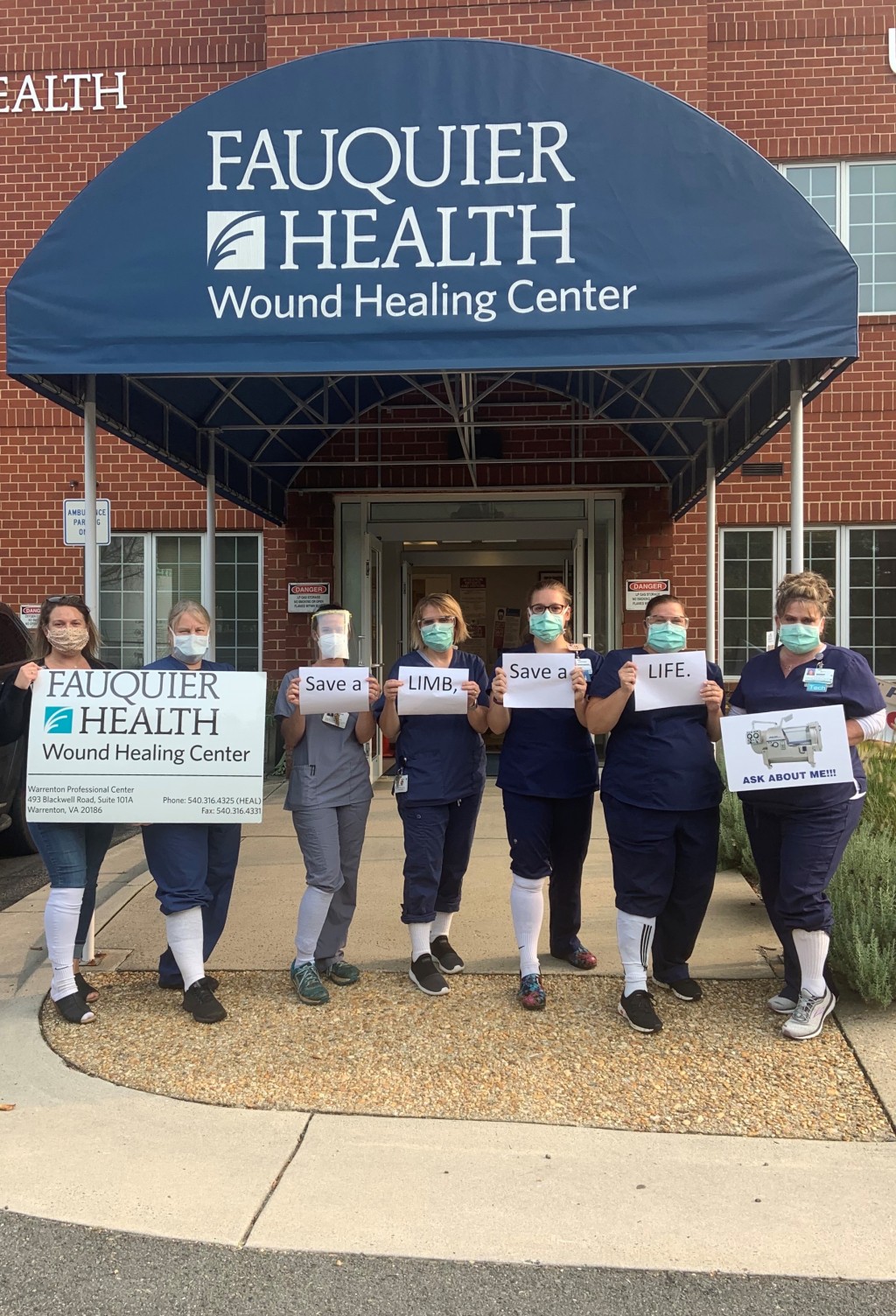News
September Peripheral Artery Disease Awareness
September 21, 2020
 Peripheral Artery Disease (PAD) is a condition that develops when the arteries, that supply blood to the internal organs, arms and legs, become completely or partially blocked as a result of atherosclerosis. PAD affects between eight and 12 million people in the U.S., contributes to difficult to heal wounds and is associated with amputation. Though the symptoms may be serious, an astonishing 40 percent of people with PAD do not experience any symptoms.
Peripheral Artery Disease (PAD) is a condition that develops when the arteries, that supply blood to the internal organs, arms and legs, become completely or partially blocked as a result of atherosclerosis. PAD affects between eight and 12 million people in the U.S., contributes to difficult to heal wounds and is associated with amputation. Though the symptoms may be serious, an astonishing 40 percent of people with PAD do not experience any symptoms.
Fauquier Health Wound Healing Center treats chronic wounds with underlying conditions of the disease as well as performs non-invasive tests for PAD and counsels patients on how to manage the illness which can, if left untreated, lead to lower limb amputation and death.
In addition to chronic wounds on the toes, feet or legs, our team at the Fauquier Health Wound Healing Center wants to highlight the following risk factors and symptoms of PAD:
- Those who smoke or have a history of smoking have up to four times greater risk.
- One in every three diabetics over the age of 50 is likely to have the disease.
- People with high blood pressure, high blood cholesterol or a personal history of vascular disease, heart attack, or stroke are at greater risk.
- As you get older the risk increases since the disease develops gradually.
- While some people dismiss it as a sign of aging, nearly everyone with PAD is unable to walk as fast or as far as they could before.
- A typical sign is experiencing fatigue or a heaviness in the limbs or cramping in the thigh or calf after walking or climbing stairs and then feeling better after resting.
- Leg or foot pain may cause trouble sleeping for those with PAD.
- The skin of the feet may change color and become pale or turn blue.
- Toenails that do not grow as well as before and decreased hair growth on the toes and legs may be another symptom.
Advanced PAD results in delayed wound healing and greater risk for limb loss. Timely detection and treatment of any wound can reduce risk of amputation and improve quality of life. The Fauquier Health Wound Healing Center offers advanced wound care treatment, technology and research. That means patients heal faster than those who receive only generalized wound care. Chronic, non-healing wounds need advanced wound care.
Dr. Lynn Samuel, the Medical Director at the Fauquier Health Wound Healing Center described the collaborative efforts at the Wound Healing Center, “Our experienced team of physicians and nurses at the Wound Healing Center treat wounds caused by PAD. Our staff works closely with Interventional Radiologists who collaborate in the diagnosis and treatment of Peripheral Artery Disease.”
According to Dr. Alexander Kieger, Interventional Radiologist at Fauquier Health, “We provide services and heal patients on a weekly basis. Advancements in technology enable us to fix vascular disease to improve blood flow using minimally-invasive procedures, where patients are able to go home the same day with little to no recovery time.”
This September, join healthcare providers across the country to raise awareness of PAD, chronic wounds and amputation. #WhiteSockCampaign
